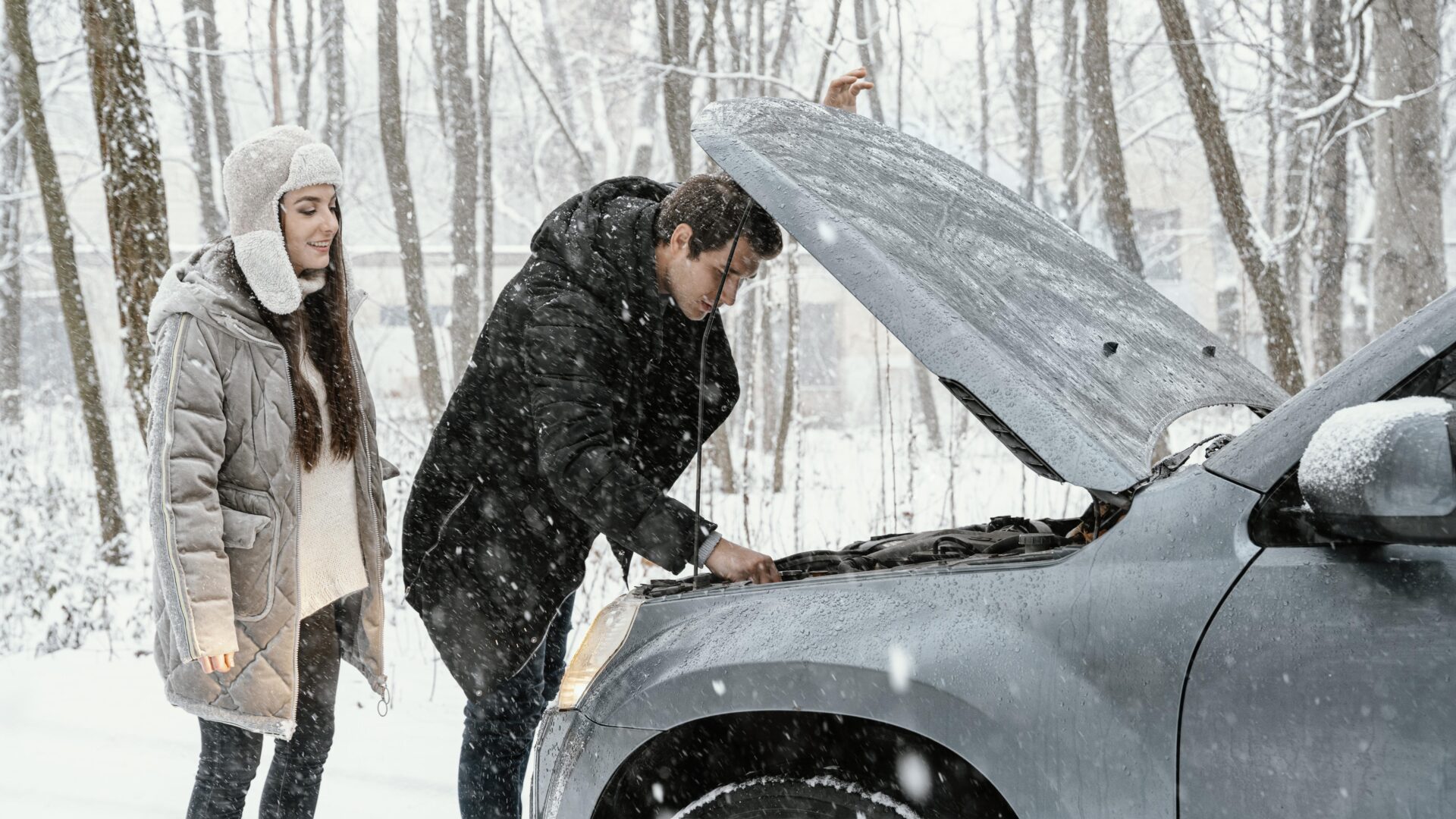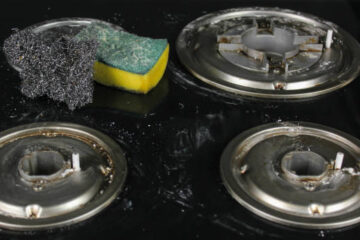Winters are indeed a time when the United States is draped in the beauty of snow, but that is not all. It is also a time of serious trouble for drivers all across the country. Icy roads prevail in the Midwest. The Rockies witness heavy snow. Under such cold temperatures, even a simple ride can turn quite adventurous thereby being very risky. Proper maintenance makes traveling safe and smooth without any breakdowns. Here is an essential guide to readying your vehicle for the season. We will mainly focus on tires, batteries, as well as coolant, and emergency kits. And believe me, following these instructions will let you travel fearlessly with confidence that your vehicle is prepared for anything that may come up this winter.
Winter conditions in the USA vary greatly. The northern states like Minnesota and New York often experience sub-zero temperatures with blizzards. In contrast, the southern regions such as Texas are more prone to isolated ice storms. Whether you live in any of these regions or others, not maintaining your vehicle in good condition can prove to be dangerous or very expensive in repairs. Get started early, say late in the fall, so that time is on your side. Here is a one-stop article for everything, from basic checks to advanced preparations—all done in simple steps. Let’s get your car performing well and keep you duly protected while on the road.
Winter Challenges on the Road in the United States
Driving in snow and ice in winter poses a lot of danger. Snow, freezing rain, and ice reduce traction and increase the slippery nature of the roads. Safety experts note that most winter car crashes are not due specifically to the bad weather condition but because of poor vehicle preparedness for winter. The freezing air thickens engine oil; it strains batteries, and it freezes vital fluids if unchecked.
Regional differences are a fact. For instance in mountainous areas such as Colorado, tire chains become a necessity for trying to get over steep passes. In the Northeast coastal regions, it is salt-sprayed roads that face them, and these can be pretty harsh on underbodies that have a tendency to corrode. The country tests every part of your car with sinking temperatures. Take the example of a temperature of 0°F where the power in a car’s battery plummets by up to 60%. That’s how cars start having hard starts.
Preparation starts with a thorough inspection, either at a trusted mechanic or through basic checks you can conduct yourself. Make sure to hone in on high-impact areas to avoid issues. Remember, safe winter driving can save lives- your own as well as others’. By taking on these challenges, you will cut down stress and will be able to enjoy the season.
Tire Preparation: The Foundation of Safe Driving
The wheels are the only surface on your vehicle that meets the road, especially in winter, the most challenging season. Methods of proper tire maintenance are necessary so that skids and blowouts do not occur on icy roads. Begin with the check of the tread depth using the penny test: if you can see the head of Lincoln, replace them. Fill with air to the pressure recommended by the manufacturer since in cold weather air shrinks.
Good tread in winter or all-season with the latter is preferable. Snow tires have a higher groove pattern in contact with the road surface, which increases the grip level. In Washington and Oregon, for example, there is a requirement for traction tires when the weather is stormy. If you stay where it snows, switch to snow tires; they reduce stopping distance by about 20%.
Inspections need to be regular so that wear is caught early. Look for uneven patterns in your tires-such will tell you about problems with the alignment. Every 5,000 miles rotate the tires to even out the wear. This easy habit extends tire life and is generally just safer.
Tire chains can be helpful in deep snow or on icy hills, especially on routes in rural USA or during blizzards. You should select chains that fit your tire size; this should be checked in your owner’s manual. The cable chains are lighter and thus easier for occasional use, whereas the diamond-pattern ones give better control.
- Carry chains in your trunk no matter the time of year, as surprise storms can hit at any time.
- Tip 1: Clean and store them dry after use to avoid rusting.
- Your tire chains are at their best when paired with a good set of snow tires: the most traction possible for those conditions.
- Check local laws- some states ban them on highways without signs.
By giving an upper hand to the tires and smartly incorporating tire chains, you can easily deal with winter roads. This alone reduces the risk of accidents to a good degree.
Battery Testing: Guaranteeing Reliable Starts
Nothing is more frustrating than finding a dead battery when you need to start your car in the middle of that icy morning. It is during cold weather that a battery faces its worst adversary because the chemical reactions inside are slowed down. This might be very slow in cranking or may not crank at all leaving you stranded.
Why Cold Weather Affects Batteries
They lose their cranking power at freezing temperatures; with every 10°F below 32°F, 20 percent of this battery’s capacity reduces. Those over three years are the worst affected, and accumulated corrosion on the terminals contributes by muffling the electricity trying to get through.
Symptoms may be as vague as dim lights or a slow crank of the engine; e.g., Alaska has some of the worst winter weather in the U.S., and January always witnesses a surge in battery-related service calls. Good preventive maintenance will keep you going.
How to Test a Battery
Testing a battery is a relatively easy and very important process. First, the voltage reading on it with the engine off indicates health: above 12.6 volts. Any reading below 12 volts means one must either charge the battery or replace it.
Take your battery to an automotive service station for more sophisticated testing. They test cold cranking amps (CCA), which is the rating equivalent to the power a battery has in winter. And clean terminals by dipping a baking soda mixture to get rid of buildup. Then tighten connections for perfect contact.
- Step 1: Visual inspection for cracks/leaks
- Step 2: Load test to mimic cold starts
- Step 3: Replace if less than 70% of original CCA
Testing batteries for cold weather is a must. Schedule yours now before the demand in the fall, which is the most favorable time. It is extremely important to have a battery that will give you reliable starts throughout the entire season. Check it over again about mid-winter if you are having trouble with it. This practice will eliminate 80% of failures that stop working during the cold months.
Antifreeze Checks: Protecting Your Engine
Your engine needs protection from just antifreeze and water. This special formula fights freezing and boiling-over by raising the boil point and lowering the freezing point.
The Role of Antifreeze
Freeze protection is provided by antifreeze since the radiator fluid does not freeze, which expands and cracks the blocks. In American winters, with temperatures at -20°F in places such as North Dakota, untreated water freezes rock solid. A 50/50 solution protects down to -34°F. It also lubricates the water pump and inhibits corrosion, a low level that will cause overheating even in cold and strained parts.
Antifreeze Checks
Antifreeze checks are among the easiest of monthly tasks. When the engine is cool, open the hood and check the level in the reservoir – top up if it’s below “full cold.” Check your protection with a tester strip: dip it in, compare with the chart. Flush out your old antifreeze every 2 years. It loses effectiveness. Refill always with the proper type: standard coolant for most vehicles. Do not mix types; it will gel.
- Visual Indicators: Milky oil, low heater output, sweet smell.
- Pro Tip: Check the hoses for cracks in them while performing the antifreeze checks.
- Maintenance Hack: Warm up slowly to get the fluid to circulate evenly.
Antifreeze checks are the heart’s health maintenance for your engine. They keep the heater running on freezing cold days and save you from very costly repairs. Make it a regular chore for worry-free driving.
Putting Together Emergency Kits for True Peace of Mind
Breakdowns occur, but an “emergency kit” and waiting out the crisis become well-manageable emergencies. Make sure it is compact, handy, and complete for a U.S. winter.
Keep blankets first for warmth, then non-perishable snacks, and water. Also, have jumper cables and a flashlight with more batteries. For the snow, try to get a shovel and sand to put in it as a traction aid.
Building Your Kit
Put in a waterproof trunk bag first. Fill according to likelihoods along the Montana thoroughfares with more insulation.
- Essentials: first-aid kit, gloves, hat and extra clothes.
- Winter-Specific: Ice scraper, tire chains (if no separate), hand warmers
- Tech Aids: Phone charger, road flares, and reflective vest
- Food and Hydration: Energy bars, bottled water (freeze one for cold pack)
- Tools: Multitool, duct tape, tow rope
Refresh your emergency kits seasonally — check those expiration dates.
Practice using the items – attach those tire chains.
Whistle and a mirror for signaling in remote areas.
Emergency kits are all about bridging the gap between the provision of help and being on one’s own-this in many cases saves lives during blizzards.
Additional Winter Maintenance Tips
Don’t forget about brakes, wipers, and lights beyond the basics. Brakes wear out quicker in the ice—check your pads if the thickness is under 3mm. If they streak, replace the wiper blades; silicone blades last longer in the cold.
Inspect all lights: headlights, taillights, and signals. Fluids like brakes and transmission need to have winter-grade viscosity. Turn the defroster on so that you can clear all windows completely before driving.
Rust-proof underneath to help it fight road salt. If possible, park it in a garage.
Winter Maintenance Checklist
| Maintenance Item | Frequency | Key Action | Why It Matters |
| Tire Pressure & Tread | Weekly | Inflate to spec; check depth | Prevents slips on ice |
| Battery Testing | Monthly | Multimeter or shop check | Ensures cold starts |
| Antifreeze Checks | Monthly | Test protection level | Stops engine freeze |
| Wiper Blades | Bi-monthly | Replace if worn | Clears snow for visibility |
| Brake Inspection | Every 3 months | Check pads and fluid | Shortens stopping distance |
| Emergency Kits | Quarterly | Restock and inspect | Prepares for breakdowns |
| Lights & Signals | Weekly | Test all bulbs | Improves nighttime safety |
Conclusion
Winter car maintenance in the USA is about more than just getting your car fixed. It’s all about keeping you safe and giving you peace of mind. Putting tire chains on snow-covered passes and ensuring the battery testing is done regularly in freezing garages are all incremental to building up that strength. Regular antifreeze checks ensure that the antifreeze is protecting your engine, while an emergency kit that’s well-provisioned deals with the unexpected.




